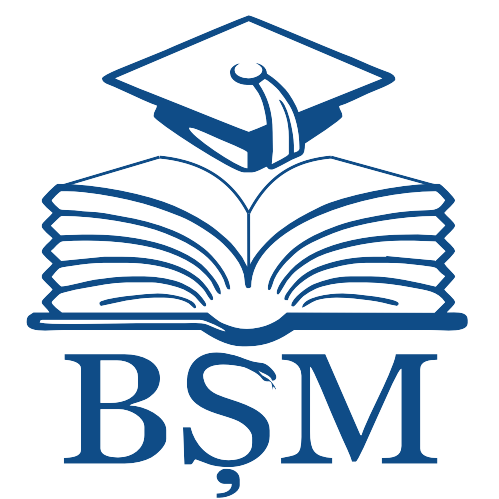|
|
- IRMS - Nicolae Testemitanu SUMPh
- 1. COLECȚIA INSTITUȚIONALĂ
- MedEspera: International Medical Congress for Students and Young Doctors
- MedEspera 2024
Please use this identifier to cite or link to this item:
http://hdl.handle.net/20.500.12710/28814
Full metadata record
| DC Field | Value | Language |
|---|
| dc.contributor.author | Racu, Maria-Victoria | |
| dc.date.accessioned | 2024-10-28T12:50:28Z | |
| dc.date.accessioned | 2024-11-19T00:10:27Z | |
| dc.date.available | 2024-10-28T12:50:28Z | |
| dc.date.available | 2024-11-19T00:10:27Z | |
| dc.date.issued | 2024 | |
| dc.identifier.citation | RACU, Maria-Victoria. Boron intake of the population from different regions of the Republic of Moldova. In: MedEspera: the 10th Intern. Medical Congress for Stud. and Young Doctors, 24-27 April 2024: abstract book. Chișinău, 2024, p. 410. ISBN 978-9975-3544-2-4. | en_US |
| dc.identifier.isbn | 978-9975-3544-2-4 | |
| dc.identifier.uri | https://medespera.md/en/books?page=10 | |
| dc.identifier.uri | https://repository.usmf.md/handle/20.500.12710/28814 | |
| dc.description | Universitatea de Stat de Medicină şi Farmacie „Nicolae Testemiţanu”, Chişinău, Republica Moldova | en_US |
| dc.description.abstract | Introduction. Boron is known as a trace element that could prevent osteoarticular diseases,
especially osteoarthritis, rheumatoid arthritis, and osteoporosis. It is supposed that for obtaining
its protective effect a dose of 3 mg of boron must be consumed daily.
Aim of study. The major sources of boron are water (30%) and diet (65%) with the remaining 5%
for hygiene and home care products. World Health Organization recommends a limit of 2,4 mg/l
of boron for drinking water with the possibility of an increase for countries where soils are rich in
boron. In the Republic of Moldova, the limit of 1 mg/l in drinking water is set by the national
legislation. The major food sources of boron are nuts and seeds, dried fruits, legumes, fresh fruits,
and vegetables. This study aimed to estimate boron intake from water and food of the population
from different regions of the Republic of Moldova and its protective effect for the osteoarticular
system.
Methods and materials. To assess the boron intake of the population, the water and food sources
were analyzed. For the first source, samples of deep drinking water were analyzed in the regional
laboratories of the National Agency for Public Health, the results were collected, were evaluated
and the regions with above-the-limit (more than 1,2 mg/l), limit (0,9-1,2 mg/l) and below the limit
(0-0,8 mg/l) boron concentration in deep drinking water were detected. Boron-rich foods were
selected based on the literature review of 120 sources. A sample of 425 patients with osteoarticular
diseases – rheumatoid arthritis and osteoarthritis was selected and all of them completed a
questionnaire that assessed their drinking water and food consumption habits. The statistical
association between variables was established using Chi-Square Tests within the Epi Info ™ 7
soft.
Results. 61,1% of the surveyed population drink water from the central water system and local
wells, and 75% use this water for cooking. The boron intake for the population from above-thelimit, limit, and below-the-limit boron in drinking water area was calculated by summing the boron
intake from water and the three most consumed rich in boron foods – nuts (75,3% population),
legumes (79,5%) and seeds (57,4%). 52,9% of surveyed people drink 1,5-2 l of water per day,
41,9% consume 2-3 portions of vegetables per day, a portion of nuts and seeds per day is 15 grams
for each, and legumes is 150 g a day with a boron concentration of 1,21 mg/100 g in nuts and seeds
and 0,48 mg/100 g. Daily boron intake from water in the above-the-limit area (Comrat, CeadirLunga) was 2,1-3,7 mg, in the limit area (Cahul, Vulcanesti) - 1,27-2,2 mg and below-the-limit
area (Calarasi, Briceni, Drochia) – 0,45-0,6 mg. Total boron intake was 3,18-4,78 mg for the first
area, 2,35-3,28 mg for the second, and 1,53-1,68 mg for the third.
Conclusion. Boron can have a protective effect on the osteoarticular system in the above-the-limit
area, may have some benefits in the limit area, and can lack in effects in the below-the-limit area
of the Republic of Moldova. | en_US |
| dc.publisher | Instituţia Publică Universitatea de Stat de Medicină şi Farmacie „Nicolae Testemiţanu” din Republica Moldova | en_US |
| dc.relation.ispartof | MedEspera: The 10th International Medical Congress for Students and Young Doctors, 24-27 April 2024, Chișinău, Republic of Moldova | en_US |
| dc.title | Boron intake of the population from different regions of the Republic of Moldova | en_US |
| dc.type | Other | en_US |
| Appears in Collections: | MedEspera 2024
|
Items in DSpace are protected by copyright, with all rights reserved, unless otherwise indicated.
|


